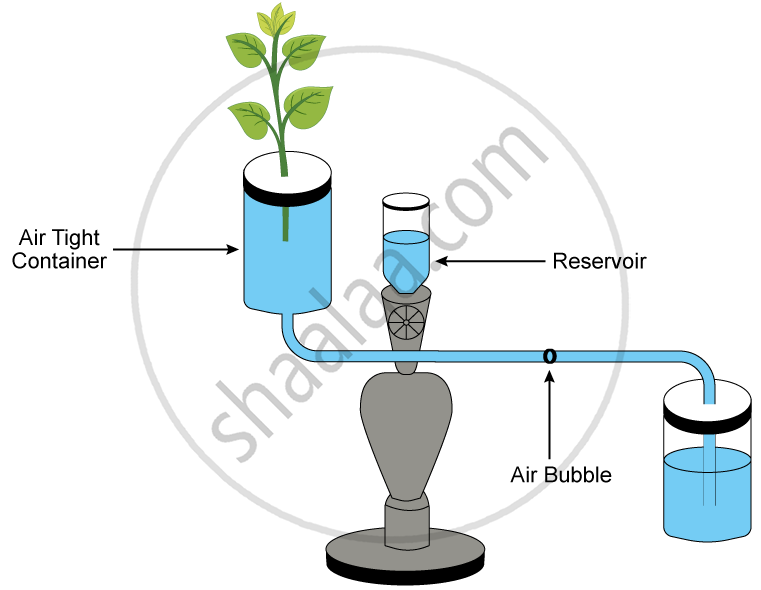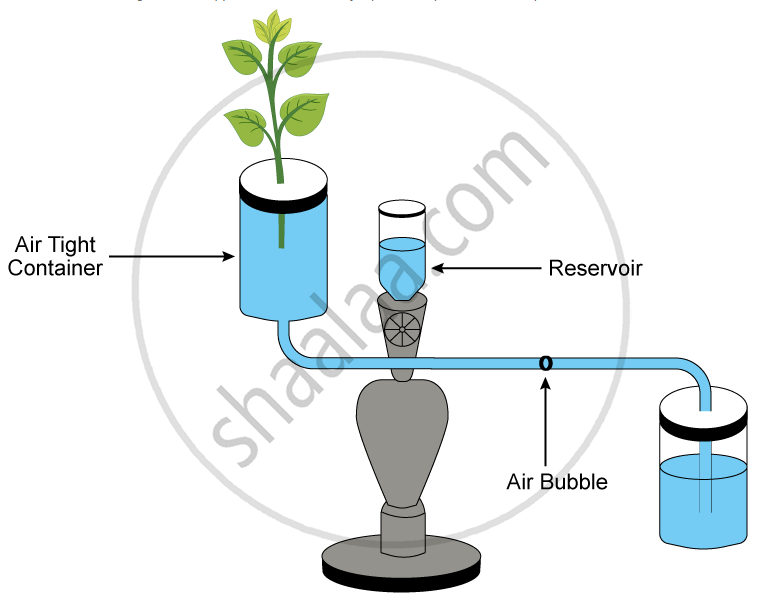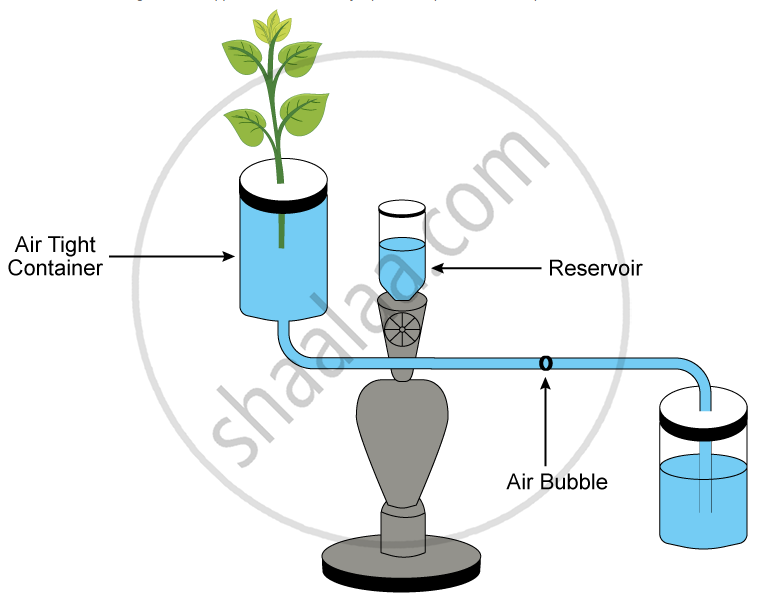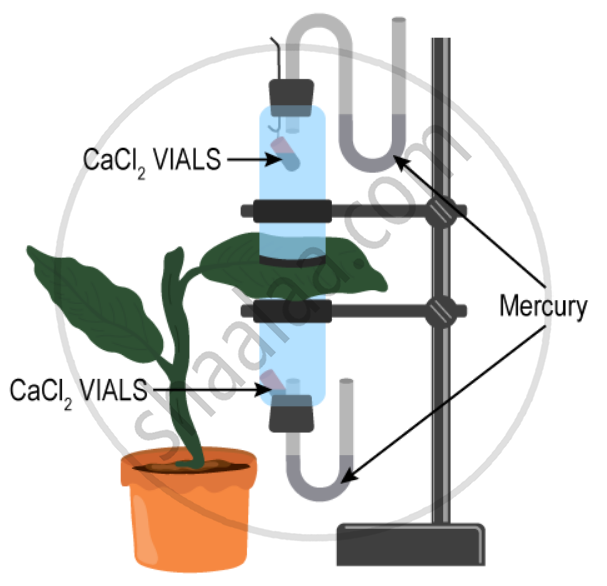Advertisements
Advertisements
प्रश्न
Given below is the diagram of an apparatus used to study a particular phenomenon in plants:

What happens to the movement of the air-bubble if the apparatus is kept:
(i) In the dark
(ii) In sunlight
(iii) In front of a fan
Give a reason in each case.
उत्तर
(i) If the apparatus is kept in the dark, there will be no transpiration as the stomata would be closed. As a result, there would be no movement of the air bubble and it would remain stable.
(ii) If the apparatus is kept in bright sunlight, the rate of transpiration will be more. As a result, the movement of the air bubble would be larger since there would be more loss of water due to transpiration.
(iii) If the apparatus is kept in front of a fan, the rate of transpiration will be more. As a result, the movement of the air bubble would be larger since there would be more loss of water due to transpiration as the velocity of wind/air increases.
APPEARS IN
संबंधित प्रश्न
Name the following:
An instrument used to find the rate of transpiration.
The apparatus shown here is Ganong's photometer designed to demonstrate unequal transpiration from the two surfaces of a dorsiventral leaf. Before keeping the leaf in between the cups, anhydrous calcium chloride (CaCl2) contained in two small vials were weighted and placed in both the cups. The ends of the cups were weighted and with corks through which two mercury manometers were connected. After a few hours, CaCl2 vials were taken out and weighed again.
(i) What is the purpose of keeping CaCl2 vials inside the cup?
(ii) After a few hours, CaCl2 vials were taken out and weighed again.
will you except any difference in weight? If so, give reasons.
(iii) What was expect the purpose of using a manometer?
(iv) What do you mean by transpiration?

Given below is the diagram of an apparatus used to study a particular phenomenon in plants:

- Name the apparatus.
- What is it used for?
- What is the role played by the air-bubble in this experiment?
- What is the use of the reservoir?
- What happens to the movement of the air-bubble if the apparatus is kept:
- in the dark
- in sunlight
- in front of a fan?
Give a reason in each case.
Given below is the diagram of an apparatus used to study a particular phenomenon in plants:

What is it used for?
Given below is the diagram of an apparatus used to study a particular phenomenon in plants:

What is the role played by the air-bubble in this experiment?
The apparatus shown in the following diagram is Garreau’s potometer designed to demonstrate unequal transpiration from the two surfaces of a dorsiventral leaf Before keeping the leaf in between the cups, anhydrous calcium chloride (CaCl2) contained in two small vials were weighed and placed in both the cups. The ends of the cups were closed with corks through which two mercury manometers were connected. After few hours, CaCl2 vials were taken out and weighed again.

What is the purpose of keeping CaCl2 vials inside the cup?
Mention, if the following statement is True or False. If false rewrite the wrong statement in its correct form:
Potometer is an instrument, used for measuring the rate of transpiration
Write any two limitations of using a Ganong's potometer to demonstrate the uptake of water.
Match the terms given in column A with column B:
| Column A | Column B | ||
| (a) | Hydathodes | (i) | Photosynthesis |
| (b) | Stomata | (ii) | Respiration |
| (c) | Cuticle | (iii) | Regulates opening and closing of stomata |
| (d) | Lenticels | (iv) | Reduces loss of water |
| (e) | Guard cells | (v) | Guttation |
Name four kinds of potometers on the basis of the names of the scientists who discovered them.
